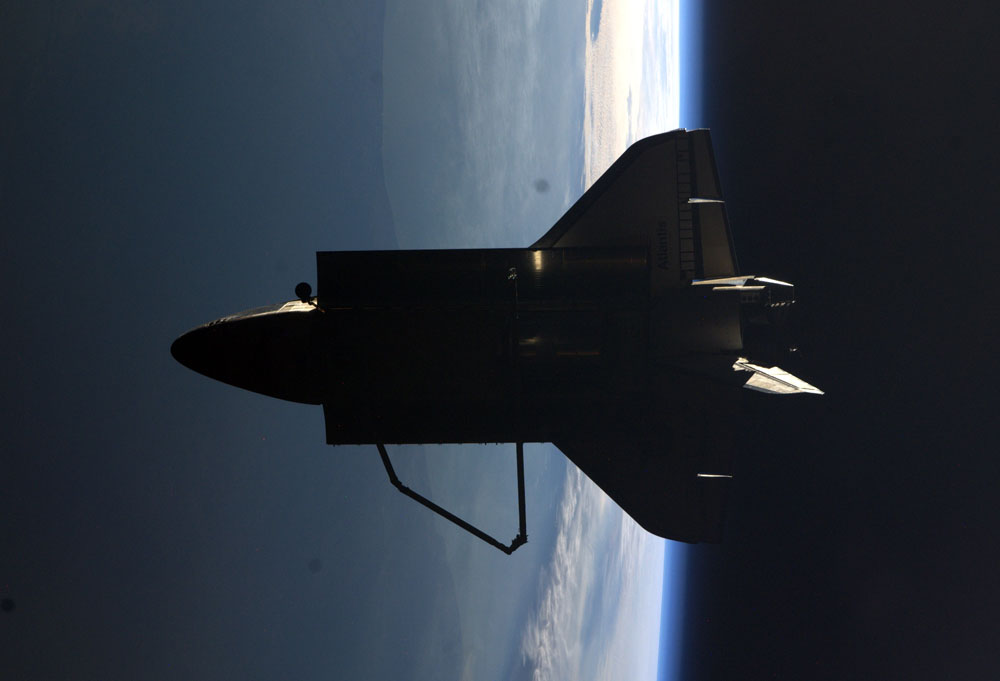Space Shuttle's Legacy: More Tech Spinoffs Than Apollo Era

After years of development and decades of flying, the now-cancelled space shuttle program has left more to future generations than pieces for museums and fond memories of exploration.
Its legacy lives on in an artificial heart device, NASCAR racing cars and rescue tools used to reach car accident victims. The entire array of NASA technology spinoffs could even be greater than the number of spinoffs from the Apollo moon missions.
Whether or not the space shuttle program was worth its $209 billion price tag remains a separate debate for human spaceflight advocates and critics. But NASA's official count of tech spinoffs that went on to become commercial products suggests that many people on Earth have seen benefits from the shuttle's human spaceflight program.
"People always think of NASA's heyday as the Apollo era, but the shuttle has produced about 50 percent more spinoffs than the Apollo era," said Daniel Lockney, technology transfer program executive at NASA headquarters in Washington, D.C.[The 7 Best Space Apps for Your Phone]
The shuttle spawned roughly 120 commercialized spinoffs, versus about 80 for the Apollo program, Lockney said. That's in part because the shuttle program ran for three decades as opposed to Apollo's one decade, but also because NASA created a more formalized system for spinning off innovations after the Apollo era.
"NASA has gotten better at the transfer of technology from the launch pad to the laboratory to the public," Lockney told InnovationNewsDaily. "The shuttle program was a huge benefactor of that." [End of Shuttle Era Opens Doors for Robotic Space Exploration]
Breaking space news, the latest updates on rocket launches, skywatching events and more!
One case emerged just as NASA was designing the space shuttle during the energy crisis of the 1970s. Per government request, the space agency tried redesigning boxy semi-trailer trucks to become more aerodynamic so that they could save on fuel. Shortly after NASA showed off its prototype design, the trucking industry chose to debut its own sleeker designs.
"If you ask the trucking industry if it took these designs from NASA, you'll categorically get a no," Lockney said. "But a year or two after NASA's tour, you see a sea change in the industry."
More recently, NASA supercomputers that had simulated fluid flow in shuttle rocket engines helped model the flow of blood in a tiny battery-powered heart pump just 2 inches long and 1 inch wide. The resulting changes led to the MicroMed DeBakey VAD device that keeps blood pumping through the hearts of ill patients awaiting heart transplants.
Leftover rocket fuel from the space shuttle launches has gone into flare devices that disable or destroy land mines. And material that protects the space shuttle from the fierce heat of re-entry has helped protect NASCAR drivers from the engine heat of their racing cars.
Even the explosive devices that separate the shuttle from its rocket boosters have become miniaturized for use in a more lightweight "Jaws of Life" device, a tool that rescue squads use to cut into car wrecks and reach accident victims.
Could NASA have created similar spinoffs if it had gone with a spacecraft other than the shuttle? That's a tough alternate-reality question to answer, Lockney said. But he emphasized that any space spinoffs represent unexpected benefits from an agency with a focused mission.
"It's important to recognize that these aren't the primary missions of NASA," Lockney said. "If you wanted to create a heart pump, building a rocket that will launch it into space wouldn't be the practical way to go about it."
You can follow InnovationNewsDaily senior writer Jeremy Hsu on Twitter @ScienceHsu. Follow InnovationNewsDaily on Twitter @News_Innovation, or on Facebook.
Jeremy Hsu is science writer based in New York City whose work has appeared in Scientific American, Discovery Magazine, Backchannel, Wired.com and IEEE Spectrum, among others. He joined the Space.com and Live Science teams in 2010 as a Senior Writer and is currently the Editor-in-Chief of Indicate Media. Jeremy studied history and sociology of science at the University of Pennsylvania, and earned a master's degree in journalism from the NYU Science, Health and Environmental Reporting Program. You can find Jeremy's latest project on Twitter.

